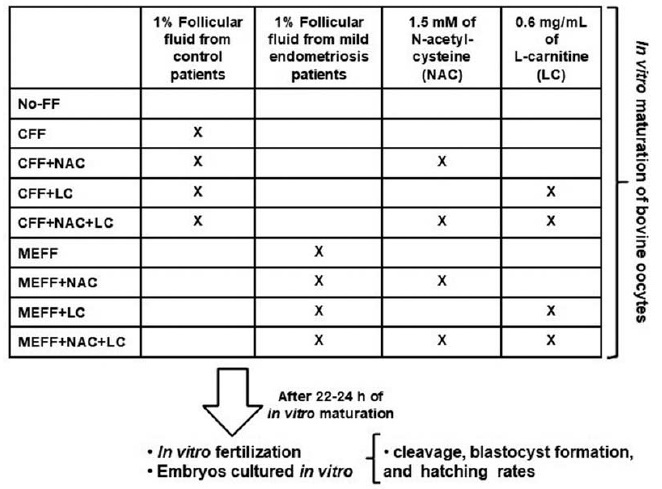Summary
Revista Brasileira de Ginecologia e Obstetrícia. 1998;20(2):118-118
DOI 10.1590/S0100-72031998000200012
Summary
Revista Brasileira de Ginecologia e Obstetrícia. 2015;37(3):119-126
DOI 10.1590/SO100-720320150005247
To assess fatigue and quality of life in disease-free breast cancer survivors in relation to a sample of age-matched women with no cancer history and to explore the relationship between fatigue and quality of life.
A cross-sectional study was conducted in a sample of 202 consecutive disease-free Brazilian breast cancer survivors, all of whom had completed treatment, treated at 2 large hospitals. The patients were compared to age-matched women with no cancer history attending a primary health care center. The Piper Fatigue Scale-Revised and the World Health Organization Quality of Life Instrument (WHOQOL-BREF) were used to measure the fatigue and quality of life, respectively. Socio-demographic and clinical variables were also obtained. The χ2 test, generalized linear model, and Spearman correlation coefficient were used for statistical purposes. The adopted level of significance was 5%.
Breast cancer survivors experienced significantly greater total and subscale fatigue scores than comparison group (all p-values<0.05). In addition, survivors reported a poorer quality of life in physical (p=0.002), psychological (p=0.03), and social relationships (p=0.03) domains than comparison group. No difference was found for the environmental domain (p=0.08) for both groups. For survivors of breast cancer and for comparison group, the total and subscale fatigue scores were related to lower quality of life (all p-values<0.01).
The findings of this study highlight the importance of assessing fatigue and quality of life in breast cancer survivors.
Summary
Revista Brasileira de Ginecologia e Obstetrícia. 2011;33(7):119-122
Summary
Revista Brasileira de Ginecologia e Obstetrícia. 2021;43(2):119-125
To investigate whether follicular fluid (FF) from infertile women with mild endometriosis (ME) alters in vitro bovine embryo development, and whether the antioxidants N-acetyl-cysteine (NAC) and/or L-carnitine (LC) could prevent such damages.
Follicular fluid was obtained from infertile women (11 with ME and 11 control). Bovine oocytes were matured in vitro divided in: No-FF, with 1% of FF from control women (CFF) or ME women (MEFF); with 1.5mM NAC (CFF + NAC, MEFF + NAC), with 0.6mg/mL LC (CFF + LC, MEFF + LC), or both antioxidants (CFF + NAC + LC, MEFF + NAC + LC). After in vitro fertilization, in vitro embryo culture was performed for 9 days.
A total of 883 presumptive zygotes were cultured in vitro. No differences were observed in cleavage rate (p = 0.5376) and blastocyst formation rate (p = 0.4249). However, the MEFF group (12.5%) had lower hatching rate than the No-FF (42.1%, p = 0.029) and CFF (42.9%, p = 0.036) groups. Addition of antioxidants in the group with CFF did not alter hatching rate (p ≥ 0.56), and in groups with MEFF, just NAC increased the hatching rate [(MEFF: 12.5% versus MEFF + NAC: 44.4% (p = 0.02); vs MEFF + LC: 18.8% (p = 0.79); versus MEFF + NAC + LC: 30.8% (p = 0.22)].
Therefore, FF from infertile women with ME added to medium of in vitro maturation of bovine oocytes impairs hatching rate, and NAC prevented these damages, suggesting involvement of oxidative stress in worst of oocyte and embryo quality of women with ME.

Summary
Revista Brasileira de Ginecologia e Obstetrícia. 2000;22(2):119-119
DOI 10.1590/S0100-72032000000200014
Summary
Revista Brasileira de Ginecologia e Obstetrícia. 2000;22(2):119-119
DOI 10.1590/S0100-72032000000200015
Summary
Revista Brasileira de Ginecologia e Obstetrícia. 2020;42(1):12-18
To assess the prevalence of gestational diabetes mellitus and the main associated risk factors in the population served by the Brazilian Unified Health System in the city of Caxias do Sul, state of Rio Grande do Sul.
A descriptive, cross-sectional and retrospective study was conducted. Maternal variables were collected from the medical records of all pregnant women treated at the basic health units in 2016. Hyperglycemia during pregnancy (pregestational diabetes, overt diabetes and gestational diabetes mellitus) was identified by analyzing the results of a 75-g oral glucose tolerance test, as recommended by the Brazilian Ministry of Health. Based on the data, the women were allocated into two groups: the gestational diabetes group and the no gestational diabetes group.
The estimated prevalence of gestational diabetes among 2,313 pregnant women was of 5.4% (95% confidence interval [95%CI]: 4.56-6.45). Pregnant women with 3 or more pregnancies had twice the odds of having gestational diabetes compared with primiparous women (odds ratio [OR]=2.19; 95%CI: 1.42-3.37; p<0.001). Pregnant women aged 35 years or older had three times the odds of having gestational diabetes when compared with younger women (OR=3.01; 95%CI: 1.97-4.61; p<0.001). Overweight pregnant women were 84% more likely to develop gestational diabetes than those with a body mass index lower than 25 kg/m2 (OR =1.84; 95%CI: 1.25-2.71; p=0.002). A multivariable regression analysis showed that being overweight and being 35 years old or older were independent variables.
In this population, the prevalence of gestational diabetes mellitus was of 5.4%. Age and being overweight were predictive factors for gestational diabetes.
